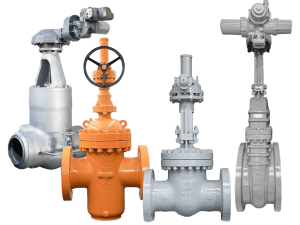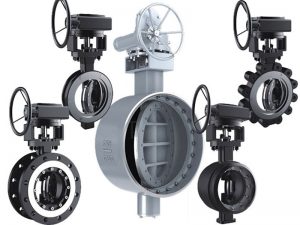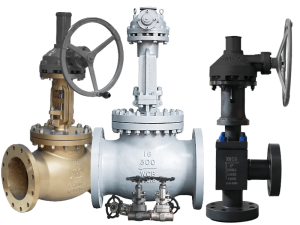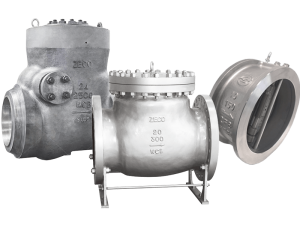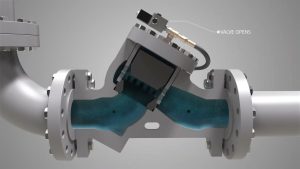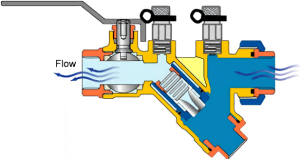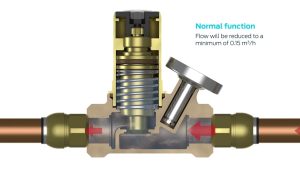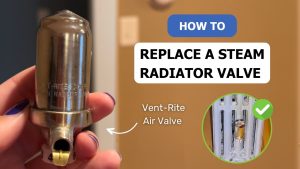A escolha entre um válvula de gaveta e válvula de borboleta nem sempre é simples. Ambos os tipos de válvulas têm vantagens e limitações distintas que as tornam adequadas para diferentes aplicações. Este artigo irá comparar as válvulas de gaveta com as válvulas de borboleta para o ajudar a determinar a melhor opção para o seu sistema.
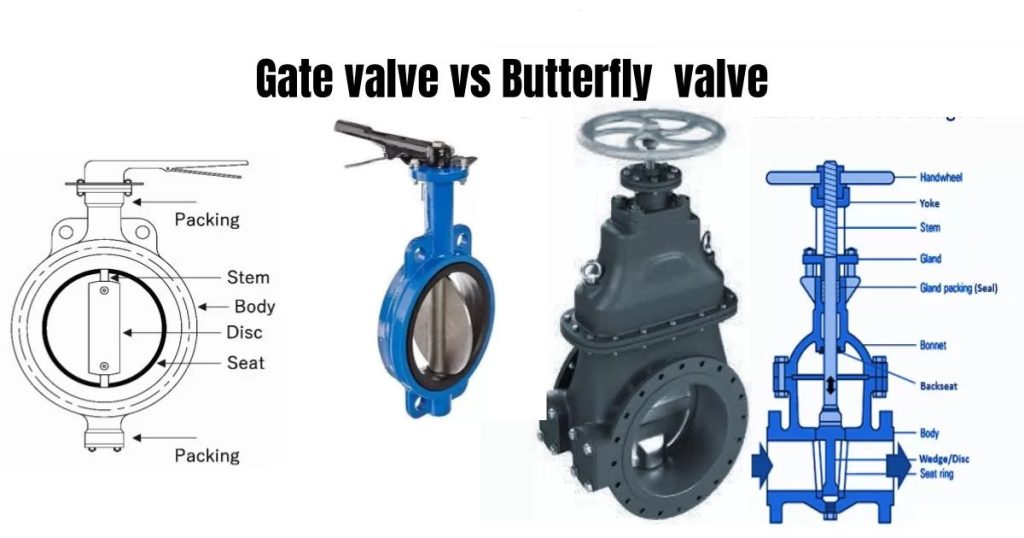
Visão geral: Como é que as válvulas de gaveta e as válvulas de borboleta funcionam?
Antes de mergulharmos no confronto entre a válvula de gaveta e a válvula de borboleta, vamos rever como cada válvula funciona a um nível básico.
Funcionamento da válvula de gaveta
As válvulas de gaveta utilizam uma comporta que se move verticalmente para controlar o fluxo de fluido. Quando totalmente levantada, a comporta permite um fluxo desobstruído e não turbulento através da válvula. A descida total da comporta bloqueia completamente o fluxo.
As válvulas de gaveta estão totalmente abertas ou totalmente fechadas - uma abertura parcial pode danificar a válvula ou a sede. O seu funcionamento relativamente lento faz com que as válvulas de gaveta não sejam adequadas para aplicações que necessitem de estrangulamento ou de acionamento frequente.
[Diagrama do funcionamento da válvula de comporta com a comporta totalmente levantada e baixada]
As válvulas de gaveta são fornecidas numa variedade de modelos, materiais e opções para acionamento manual ou automático. Os principais tipos incluem válvulas de cunha sólida, cunha flexível, deslizamento paralelo e válvulas de guilhotina.
Funcionamento da válvula de borboleta
As válvulas de borboleta utilizam um disco rotativo - a "borboleta" - para regular o caudal. Uma rotação de 90 graus move o disco de totalmente aberto (paralelo ao caudal) para totalmente fechado (perpendicular ao caudal).
Ao contrário das válvulas de gaveta, as válvulas de borboleta também podem regular o fluxo com precisão através de posições intermédias do disco. O seu funcionamento simples permite um acionamento rápido e frequente.
Os modelos de válvulas de borboleta diferem principalmente pelo estilo de contacto entre o disco e o assento. As opções mais comuns são a deslocação zero, a deslocação simples, a deslocação dupla e a deslocação tripla. Os materiais variam entre o plástico e várias ligas metálicas.
Comparação entre válvulas de gaveta e válvulas de borboleta
Vamos agora comparar diretamente as vantagens, desvantagens e aplicações das válvulas de gaveta com as válvulas de borboleta.
Conceção estrutural
As válvulas de gaveta contêm mais componentes do que as válvulas de borboleta. Peças extra como o castelo, o empanque e a haste ascendente tornam a construção da válvula de gaveta mais complexa.
A peça de cunha móvel da válvula de gaveta permite um fecho mais apertado do que o disco único de uma válvula de borboleta. Mas o contacto direto sequencial do disco provoca um desgaste comparativamente mais rápido.
A conceção da válvula de gaveta permite um fluxo de passagem total. Isto reduz a resistência e evita a perturbação do padrão de fluxo. As válvulas de borboleta obstruem inerentemente o fluxo de alguma forma, mesmo quando totalmente abertas.
Facilidade de operação
As válvulas de borboleta são excelentes em termos de velocidade de funcionamento, permitindo o ajuste do caudal através de uma rápida rotação de 90 graus. As válvulas de gaveta requerem o enrolamento gradual da haste em várias voltas para fazer subir ou descer a gaveta.
O funcionamento frequente tende a danificar as válvulas de gaveta ao longo do tempo. O empanque do castelo pode desgastar-se, causando fugas ou danos no veio. As válvulas de borboleta sofrem um desgaste insignificante devido ao ciclo.
Enquanto as válvulas de gaveta apenas permitem um controlo de caudal totalmente ligado ou totalmente desligado, as válvulas de borboleta estrangulam com precisão através de uma gama de aberturas. Isto confere-lhes uma ajustabilidade superior.
Fiabilidade e manutenção
Quando novas, as válvulas de gaveta e de borboleta atingem uma fiabilidade mecânica comparável. Mas o vedante do castelo das válvulas de gaveta desgasta-se com o tempo, acabando por permitir fugas. Este facto obriga à substituição periódica do vedante.
O movimento unidirecional do disco das válvulas borboleta impede o refluxo sem uma válvula de retenção. As válvulas de gaveta necessitam de prevenção de refluxo externo em aplicações bidireccionais.
Durante longos períodos de tempo, os discos das válvulas de borboleta sofrem desgaste da superfície de assentamento. No entanto, a revisão completa da válvula de borboleta tem um custo mais baixo do que a reconstrução de válvulas de gaveta.
Considerações sobre a instalação
Em tamanhos mais pequenos, os preços das válvulas de gaveta e de borboleta são comparáveis. Mas para grandes diâmetros, os custos das válvulas de borboleta são consideravelmente mais baixos.
Os requisitos de espaço de instalação também favorecem as válvulas de borboleta. As suas formas compactas e leves ocupam menos espaço do que os corpos pesados e volumosos das válvulas de gaveta.
Os discos das válvulas de borboleta constituem um obstáculo à tubagem pigmentaçãoAo contrário das válvulas de gaveta de furo completo. Nos casos em que é necessário o acesso ao lançador/recetor de suínos, as válvulas de gaveta têm a vantagem.
Gráfico de comparação entre a válvula de gaveta e a válvula de borboleta
| Fator | Válvula de gaveta | Válvula de borboleta |
|---|---|---|
| Custo (tamanhos grandes) | Elevado | Baixa |
| Peso (tamanhos grandes) | Pesado | Luz |
| Velocidade de atuação | Lento | Muito rápido |
| Ajustabilidade | Totalmente aberto/fechado apenas | Aceleração exacta |
| Tendência a fugas | Desgaste da vedação do castelo ao longo do tempo | Assento resiliente Desgaste ao longo do tempo |
| Frequência de manutenção | Moderado | Baixa |
| Espaço de instalação | Grande | Compactar |
| Resistência ao fluxo | Mínimo | Moderado |
| Tubo Pigging | Permitido | Restrito |
Escolher entre válvulas de gaveta e válvulas borboleta
Como mostra a comparação, tanto as válvulas de gaveta como as válvulas de borboleta têm nichos de aplicação vantajosos e desvantajosos. Tenha em mente estas diretrizes quando selecionar um dos tipos de válvula:
Preferir válvulas de gaveta para:
- Fecho estanque e controlo de fluxo bidirecional
- Resistência mínima ao fluxo
- Permitir a tubagem pigmentação
- Instalações grandes e pesadas
Preferir válvulas de borboleta para:
- Ciclos frequentes ou estrangulamento
- Instalações compactas com limitações de espaço
- Linhas de grande diâmetro sensíveis ao custo/peso
- Controlo de fluxo unidirecional
Dentro das suas limitações operacionais, tanto as válvulas de gaveta como as válvulas de borboleta conseguem um controlo fiável do fluxo. A compreensão das suas diferenças permite escolher a tecnologia de válvulas ideal para as necessidades da sua aplicação. Uma seleção adequada maximiza o desempenho, a segurança e a eficiência de custos.
Esperamos que esta visão geral lhe dê uma perspetiva equilibrada sobre a decisão entre a válvula de gaveta e a válvula de borboleta. Por favor, partilhe as suas ideias ou questões sobre válvulas nos comentários abaixo!


